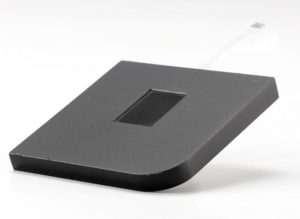
Today, NEXT Biometrics introduced a new line of ultra-thin fingerprint sensor designs. The new sensors will forego the large bezels and metal frames used in NEXT’s first generation sensors. The company aims to cater to the booming mobile device market, in which design space is a premium.
With the removal of the bezel, NEXT asserts that the news ultra-thin sensors are characterized by lower material costs, an impressive feat considering the company already counts low-cost as one of its technology’s strengths. The new designs also enhance the electrostatic discharge (ESD) robustness to comply with the most rigorous esd standards.
“Targeting significant market share in the attractive smartphone, tablet and notebook markets, NEXT has been aiming to better meet the requirements of industrial designers,” says NEXT CEO Tore Etholm-Idsoe. “Our NEXT sensors will now be virtually flush with the surroundings, sunken in only by 0.4 to 0.6 mm. This combines great ID with the minimum depth needed for users to feel where to place the finger. Such minimum guidance for uniform finger placement is important for the user experience of any fingerprint system. This is especially true in the context of smartphones, which are used on-the-go.”
Etholm-Idsoe expects that the new ultra-thin sensors will aid in expanding NEXT’s share of the smartphone, tablet and notebook fingerprint sensor market. The benefits of NEXT’s latest product innovation will no doubt better position them to take advantage of the increasing proliferation of biometric sensors on consumer devices.
NEXT Biometrics has been in the news frequently as of late, having received major repeat sensor orders from a US client and also having partnered with iWallet, a techcessories company with a focus on strong authentication.
—
August 24, 2015 – by Peter B. Counter


Follow Us